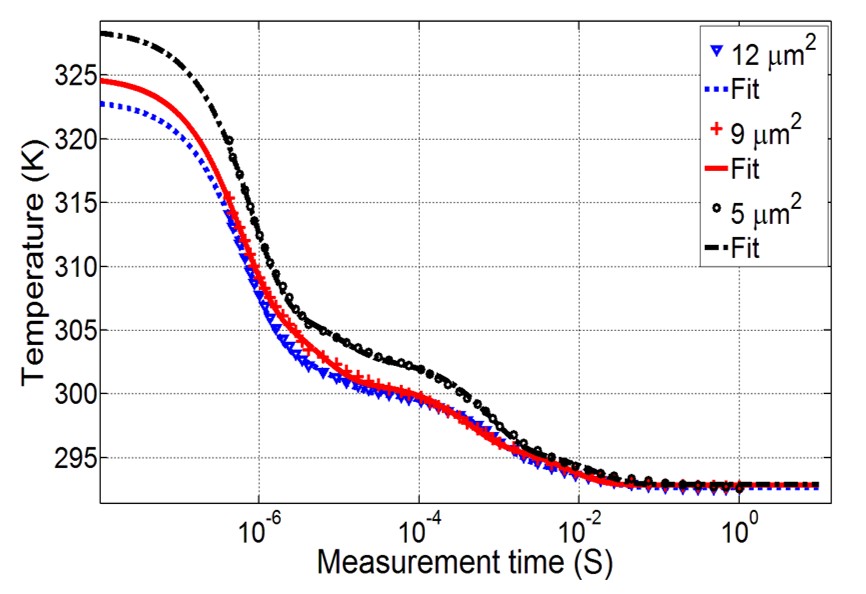Characterisation, Modelling, and Applications of Nonlinear Two-Terminal Millimetre-Wave and THz Devices
Subash Khanal, Tero Kiuru, Juha Mallat, and Antti V. Räisänen
Aalto University RAD Department and MilliLab have ESA/ESTEC-related research activities for the characterisation of millimetre-wave and THz Schottky diodes in standardised set-ups for IV, CV and S-parameters. In addition to using well-known methods, with some improvements for application with extremely small THz Schottky diodes, also novel methods have been developed.
All topics are detailed in publications, please, consult Aalto University Research Information Portal
Thermal Property Extraction for THz Schottky Diodes Using Transient Current Measurement Method
A new method for thermal characterization of THz Schottky diodes has been developed. The method is based on the transient current behavior, and it enables the extraction of thermal resistances, thermal time-constants, and peak junction temperatures of THz Schottky diodes. Many typical challenges in thermal characterization of small-area diode devices, particularly those related to self-heating and electrical transients, are either avoided or mitigated. The method is validated with measurements of commercially available single-anode Schottky varactor diodes. A verification routine is performed to ensure the accuracy of the measurement setup, and the characterization results are compared against an in-house measurement-based method and against simulation results of two commercial 3-D thermal simulators. The new method can be used to measure small diode devices with thermal time constants down to about 300 ns.

Figure 1: Thermal characterization measurement results for THz Schottky diodes of different anode areas.
Experimental Investigation of Traps in THz Schottky Diodes
Indications of charge trapping in THz Schottky diodes have been investigated with various measurement techniques including current-voltage, capacitance and low-frequency noise measurements. Correlation between different measurement techniques is observed which indicate the presence of traps in measured Schottky diode samples. Diode samples are measured in on-wafer environment using a probe station.
Mixer Test Jig Based Characterization
Characterisation of Schottky diodes with measurements in a mixer test jig (see Fig. 2) can assess the performance of different diodes in mixer operation under comparable conditions – in this case in a mixer test jig at 183 GHz. Easy changing of diode with substrate is important as well as very good low-loss impedance tuning possibility. These are some of the advantages provided by the mixer test jig.

Figure 2: Electromagnetic simulation model of the mixer test jig.
Novel Methods for THz Schottky Diode Series Resistance Extraction
Among the relatively recent results of this research topic is a new break-through in Schottky diode series resistance extraction. As a major improvement over the commonly used traditional method, the novel methods take holistically into account also important self-heating related effects in THz Schottky diodes having submicron junction dimensions. This effect is highly important for the design and performance of future Schottky THz receivers and signal sources. For example, actual diode series resistances can be double in comparison to traditional less reliable results (see Fig 3.).

Figure 3: Extracted series resistance vs. maximum bias current by using the traditional extraction routine (red curve) and the new extraction methods. Example case of a typical submicron anode diode.



